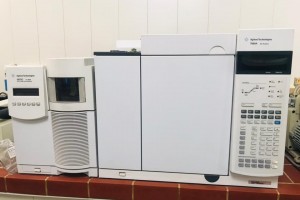

The College of Education for Pure Sciences at the Department of Chemistry at the University of Basra discussed a master's thesis entitled to prepare and evaluate the effectiveness of protein-loaded polymers and study the mechanics of polymer degradation and the factors that affect its degradation
The thesis presented by the researcher included Sarah Aref Kamel
The first part of the study included the preparation of a number of polymeric structures from natural polymers (casein, sodium gene) and synthetic (carbabol) that are biodegradable and using different techniques (fine spherical particles and gels technology) and loading these polymeric structures with nitrofurantoin to control drug release. And the study of the release of nitrofurantoin drug from the polymeric compositions in different media of the acidic function and the study of the degradation of gel structures in the hypothetical body fluid and the regulating phosphate liquid, as well as the drug release kinetics.
The second part includes the study of the biological effectiveness of the prepared polymeric structures compared to the effectiveness of the drug alone, as well as the study of cytotoxicity.
The thesis aims to
Designing safe and effective drug delivery systems with the best controlled release method to overcome the barriers of conventional treatment and improve drug efficacy to obtain maximum therapeutic efficacy from delaying drug release by using polymeric structures coated with nitrofurantoin for the purpose of controlling drug release in a balanced manner concluded the message
Drug-laden polymers are effective for controlled release, whether in the form of fine spherical particles or gels. And the drug's release from the studied formulations increases with increasing drug concentration and time, and it is more liberated in neutral medium (PH = 7.4) and for gel polymeric structures. Likewise, the difference in the concentrations of the substances that make up the studied polymeric structures has an effect on the speed of release of the drug. The drugs assigned to biodegradable polymers loaded with the drug have the highest biological effectiveness against bacteria compared to the drug alone and have also proven to be non-toxic.
The thesis recommended
Expanding this study and using more advanced devices to monitor drug release such as HPLC devices and others, and preparing the same polymeric structures in the form of nanoparticles by using a technique.







